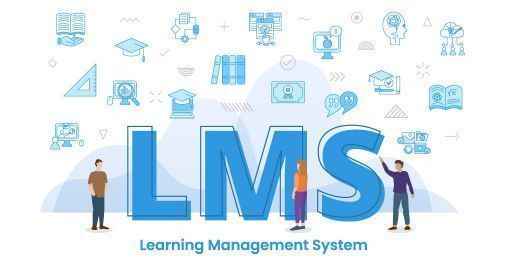

How to choose an LMS: the 5 mistakes not to make
Choosing the right LMS is essential for the success of your training project. Discover the 6 mistakes not to make when choosing an eLearning platform.
How to choose an LMS: the 5 mistakes not to make
Choosing the right LMS is essential for the success of your training project. Discover the 6 mistakes not to make when choosing an eLearning platform.
In order to develop and distribute an online or blended training course, it is necessary to rely on a learning management platform that allows the delivery, monitoring and management of eLearning programs. In the world linked to the web, however, there are now a multitude of services dedicated to eLearning and navigating through the hundreds of learning management systems is anything but easy and immediate. Choosing the most suitable LMS platform for your online course, based on the contents of the lessons and your learning needs, requires careful and precise research. In order to make this choice correctly it is essential to carefully evaluate all the possibilities that the world of the web offers. Here is a guide to avoid the most common mistakes and find the most suitable LMS for your eLearning course.
What is an LMS?
The acronym LMS literally indicates the Learning Management System. It is a software platform that allows you to deliver, monitor and manage the entire training process, from design and creation to sharing with users and monitoring the results achieved by your students.
As already explained in a previous article of ours, the main advantage of a Learning Management System is the digitalisation of training, which allows users and trainers to always have the necessary means available to participate in lessons or, vice versa, to deliver them.
Mistakes not to make
We have already talked about the elements to consider when deciding which LMS to use in our complete guide to choosing an eLearning platform. However, it is also fundamental to pay attention to the mistakes to avoid, so as not to risk making a wrong choice, which would make the LMS adopted ineffective for your course. Here, then, is a list of mistakes not to make:
- Forgetting to define clear objectives for the training path you propose. It is not enough for a platform to be aesthetically attractive for your online course to offer an effective training opportunity, but it is necessary to previously plan the results that can be achieved by the user based on the needs that the course responds to. In this way you will be able to define which functions to prioritize, which tools to offer, how to organize the contents and which systems to include in the offer. Only once this step has been taken is it possible to choose an LMS that is in line with the training objectives of your eLearning course.
- Neglect mobile devices. Don't think you have to design your online course solely for desktop use because, even though the majority of students access the sites via laptops, a large portion of users use tablets and smartphones. For this reason, when designing a training path, it is important to pay attention to choosing an LMS that provides a series of services designed specifically for students who access learning from mobile, including the presence of videos optimized for mobile phone screens, lessons in audio format and an interface that adapts to your mobile device.
- Not taking user experience into consideration. Designing an online course without taking into account the interface aimed at the student is a mistake that could be costly, risking leading users to abandon the lessons and the platform due to difficulty in managing the courses or a lack of clarity of the site itself. For this reason, UX design is of fundamental importance in the design of an eLearning course. From this perspective, the choice of platform must also take into consideration the design and appearance of the site, so that it is attractive for the user, simple and clear to use and engaging. In this way, the student will feel more involved in the learning process and will be more likely to attend the eLearning course, recommend it to his acquaintances and sign up for other lessons on the same platform in the future. When choosing the LMS, therefore, do not forget to pay attention to the User Experience, trying to put yourself in the shoes of the user who interfaces with the website for the first time, so as to understand the strengths and possible limitations of the learning management platform you are ready to use.
- Forgetting to test the functionality of the LMS. Before making the choice, it is essential to experience all the features of the platform, to verify that it adapts to the needs of the students, based on the objectives that have been set. In this way, you can realize the actual effectiveness of the LMS in relation to your needs and you will understand which functions are most necessary and which, on the contrary, your site can do without. Platforms offer a wide range of features, and trying them out can help you figure out which one is best for you.
- Think of the LMS as a large online archive. A learning management platform will certainly end up containing a large amount of teaching materials, whether textual content, videos, audio lessons, images, or tests. The biggest mistake, in this case, would be to treat the LMS as a platform that collects content, without any other purpose. Users who participate in an eLearning course expect something more and would like to have a complete learning experience that goes beyond simply finding files online. Therefore, make sure that the chosen platform guarantees student interaction and involvement.